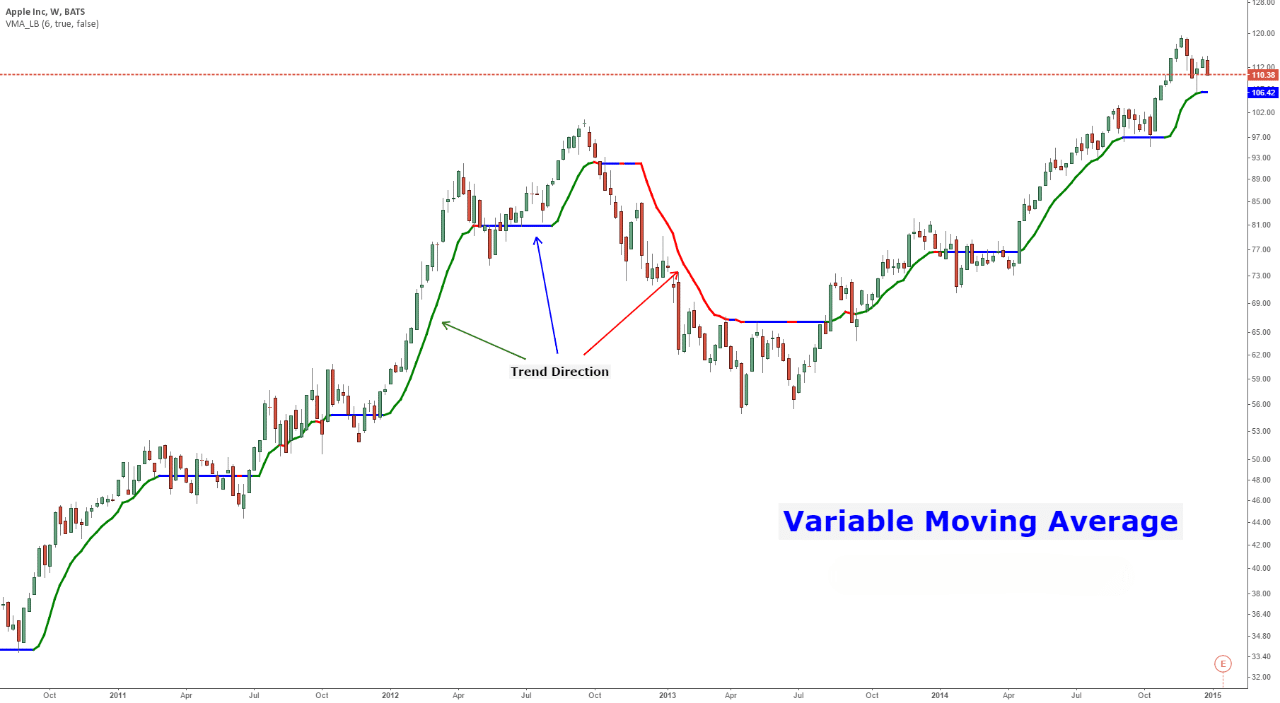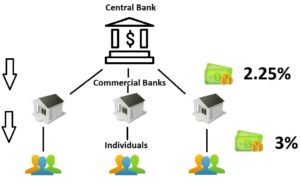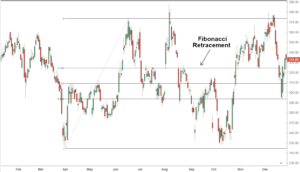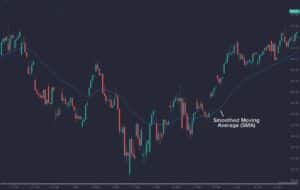In the fast-paced world of financial markets, technical analysis plays a crucial role in helping traders make informed decisions. A key tool within this analysis is the moving average (MA), which smooths out price fluctuations and reveals underlying trends. However, a traditional moving average has a limitation: it uses a fixed window of data points, which can be less responsive to changing market conditions. This is where the Variable Moving Average (VMA) steps in.
What is a Variable Moving Average (VMA)?
A Variable Moving Average is a type of exponential moving average (EMA) that dynamically adjusts its smoothing factor based on market volatility. While a standard EMA assigns a decreasing weight to older price data, the VMA takes this concept a step further. It automatically increases the weight given to recent prices during periods of high volatility and vice versa. This dynamic adaptation allows the VMA to be more reactive to price movements and potentially provide better signals for trading decisions.
How Does a VMA Work?
The core principle behind the VMA lies in its ability to adjust the smoothing factor (alpha) based on a volatility measure. There are various approaches to calculate this volatility measure, with the Average True Range (ATR) being a common choice. The ATR reflects the average price fluctuation over a specific period. When the ATR is high, it indicates increased volatility, and the VMA formula assigns a higher weight to recent prices. Conversely, during periods of low volatility (low ATR), the VMA places more emphasis on older data points.
There are several ways to implement the VMA calculation. Here’s a simplified representation:
VMA (t) = [Price (t) * Alpha (t)] + [VMA (t-1) * (1 – Alpha (t))]
- t: Current time period
- Price (t): Price at the current time period
- Alpha (t): Smoothing factor at the current time period, derived from the volatility measure (e.g., ATR)
- VMA (t-1): Variable Moving Average at the previous time period
As you can see, the calculation incorporates both the current price and the previous VMA value. The key element here is the Alpha (t), which dynamically adjusts based on the chosen volatility measure.
Benefits of Using a VMA
The primary advantage of the VMA lies in its ability to adapt to changing market conditions. Unlike a fixed-period moving average, the VMA reacts more readily to price swings. This responsiveness can be particularly beneficial in volatile markets where trends can shift quickly. Here are some key benefits of using a VMA:
- Improved Trend Identification: By placing more weight on recent data during volatile periods, the VMA can provide a clearer picture of the underlying trend. This allows traders to identify trend changes more effectively, potentially leading to better entry and exit points.
- Reduced Lag: Traditional moving averages suffer from lag, meaning they react slowly to price movements. The VMA’s dynamic nature helps to minimize this lag, allowing traders to potentially capitalize on opportunities more swiftly.
- Adaptability to Different Markets: The VMA can be beneficial in both trending and choppy markets. During trends, it can closely follow the price movement, while in choppy markets, it can filter out some of the short-term noise.
Using the VMA for Trading Strategies
The VMA can be integrated into various trading strategies. Here are some common approaches:
- Crossovers: Similar to traditional moving averages, traders can use VMA crossovers to identify potential entry and exit points. For example, a buy signal might be generated when a shorter-term VMA crosses above a longer-term VMA, indicating a possible trend up.
- Support and Resistance: The VMA can act as a dynamic support or resistance level, especially during periods of high volatility. Traders can use these levels to place orders or identify potential breakout opportunities.
- Confirmation with Other Indicators: The VMA is often used in conjunction with other technical indicators for confirmation. For instance, a VMA crossover might be considered more reliable if it aligns with a bullish signal from a momentum indicator.
Limitations of the VMA
While the VMA offers several advantages, it’s crucial to understand its limitations:
- False Signals: Like any technical indicator, VMAs can generate false signals, especially during periods of high volatility. Combining the VMA with other indicators and proper risk management is essential.
- Parameter Selection: The effectiveness of the VMA can be impacted by the chosen volatility measure and its parameters. Experimentation and backtesting are necessary to find settings that work best for your specific trading style and market conditions.
- Lag Still Exists: Although the VMA reduces lag compared to fixed-period moving averages, it still reacts with some delay to price movements. This is inherent to any moving average calculation.
The VMA as a Dynamic Tool
The Variable Moving Average offers a valuable addition to a trader’s technical analysis toolbox. Its ability to adapt to market volatility provides a more dynamic perspective on price movements compared to fixed-period moving averages. However, it’s important to remember that the VMA is not a magic bullet. Here are some key takeaways to consider:
- The VMA is a tool, not a holy grail. Always prioritize sound risk management strategies and combine the VMA with other indicators for confirmation.
- Backtesting is essential. Before deploying the VMA in live trading, test it on historical data to assess its effectiveness under different market conditions.
- Adapt the VMA to your style. Experiment with different volatility measures and parameters to find settings that suit your trading timeframe and risk tolerance.
By understanding the strengths and limitations of the VMA, traders can leverage its dynamic nature to potentially improve their ability to identify trends, reduce lag, and make informed trading decisions in ever-changing markets.
Beyond the Basics: Advanced VMA Techniques
While the core concept of the VMA is straightforward, there are advanced techniques that experienced traders can explore:
- Multiple VMAs: Utilizing multiple VMAs with different lookback periods can offer a more comprehensive view of the trend and potential turning points.
- Custom Volatility Measures: While ATR is a common choice, some traders may explore alternative volatility measures like the Average Directional Index (ADX) or the Keltner Channels to potentially fine-tune the VMA’s responsiveness.
- Filtering VMAs: Combining the VMA with filtering techniques like moving average convergence divergence (MACD) can help to remove some of the noise associated with short-term price fluctuations.
Remember: These advanced techniques require a deeper understanding of technical analysis and should be approached with caution.
The Future of VMAs
As technology evolves and market data becomes more readily available, we can expect further advancements in VMA calculations. Machine learning techniques might be incorporated to dynamically adjust the VMA based on a wider range of market factors. Additionally, the development of new volatility measures tailored to specific asset classes could further enhance the VMA’s effectiveness.
In conclusion, the Variable Moving Average stands as a valuable tool for traders seeking to adapt their technical analysis to the dynamic nature of financial markets. By understanding its core principles, limitations, and potential for further development, traders can leverage the VMA to potentially improve their trading strategies and decision-making processes.
Let’s Manage Your Forex Funds With Fx Pips Guru!
Fx Pips Guru is a forex fund management company managing client’s funds based on monthly profit share. Let’s do Live Chat with our experts.




